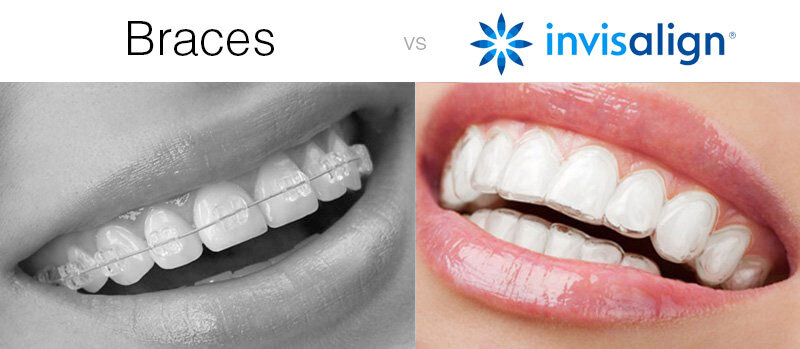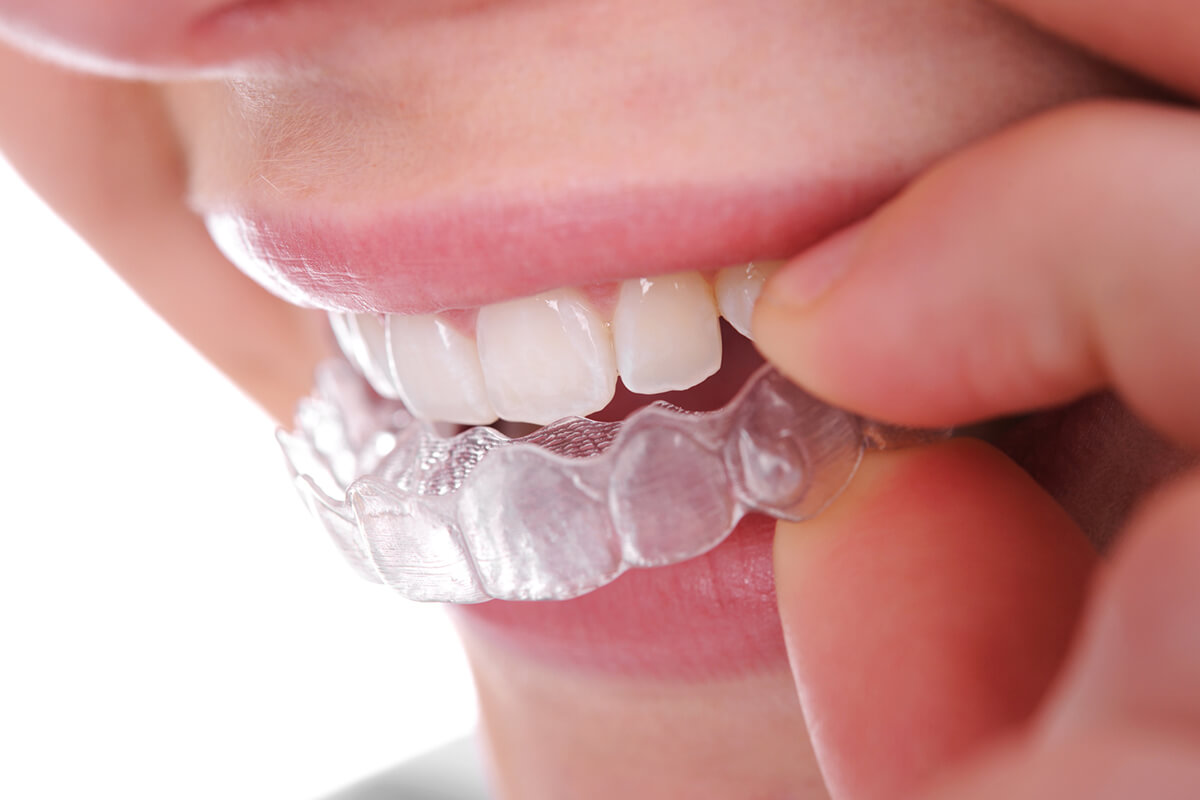Top Reasons to Pick Invisalign Over Other Orthodontic Treatments
Top Reasons to Pick Invisalign Over Other Orthodontic Treatments
Blog Article
Invisalign vs. Standard Braces: Which Alternative Is Right for You?
When considering orthodontic therapy, the choice in between Invisalign and standard dental braces offers numerous crucial factors that warrant careful evaluation. Invisalign provides a very discreet option with detachable aligners, while conventional dental braces supply an extra visible yet effective option for severe imbalance. Each alternative includes distinct benefits and downsides connected to appearances, convenience, treatment period, and price. Comprehending these subtleties is critical for making a notified decision that aligns with your individual choices and way of living. The concern remains: which option will ideal meet your orthodontic demands and assumptions?
Review of Treatment Choices

In comparison, conventional dental braces contain steel brackets and wires that are bound to the teeth. This approach uses continuous pressure gradually to achieve placement. While reliable for complicated orthodontic issues, conventional dental braces require normal brows through for changes and can posture obstacles in preserving dental health due to the difficulty of cleansing around braces and cables.
Both choices have their advantages, and the option frequently depends upon specific oral problems, way of living choices, and patient conformity. Inevitably, speaking with an orthodontic specialist is important for establishing the most appropriate therapy plan customized to private requirements. Understanding the subtleties of each choice can considerably influence the total success of orthodontic therapy.
Aesthetic Factors To Consider
A substantial element affecting the choice in between Invisalign and conventional braces is the visual allure each therapy offers. Invisalign aligners are crafted from clear plastic, making them practically undetectable when worn. This discreet look is specifically attracting teens and adults that may really feel self-conscious regarding their orthodontic treatment. The ability to preserve an all-natural smile throughout the positioning process can considerably enhance the person's self-confidence in professional and social setups.
On the other hand, conventional braces consist of metal braces and cables, which can be much more recognizable. While developments in orthodontic innovation have brought about the growth of smaller braces and tinted elastics, traditional dental braces still maintain a more noticeable profile. For some individuals, the presence of braces might discourage them from seeking required therapy.
Ultimately, the option between Invisalign and typical braces might depend upon individual preferences pertaining to appearances. Clients that prioritize discretion commonly favor Invisalign, while those who are much less worried about exposure may choose traditional braces. Recognizing the visual implications of each choice is essential for making an educated choice that aligns with one's way of life and choices.
Convenience and Convenience

In terms of convenience, Invisalign aligners are detachable, making it possible for individuals to enjoy their favorite foods without restriction and keep ideal oral health. Cleaning and flossing are simplified, as the aligners can be obtained during these regimens, whereas standard braces call for cautious maneuvering around wires and brackets.
In contrast, typical braces demand regular modifications, making them much less hassle-free for those with busy timetables. Overall, the convenience and ease of Invisalign make it an enticing option for several individuals seeking orthodontic treatment.
Therapy Period and Efficiency
While both Invisalign and conventional dental braces work in fixing oral misalignments, the duration of therapy can differ considerably between both alternatives. Usually, Invisalign treatment can take anywhere from 12 to 18 months, relying on the intricacy of the case. The clear aligners work by slowly moving teeth right into their wanted placements, and routine follow-ups with an orthodontist help guarantee progression continues to be on track.
On the other hand, conventional braces often require a longer commitment, typically ranging from 18 months to three years. This useful link is because of their fixed nature and using braces and cords, which can be extra reliable for extreme imbalances and intricate instances (Invisalign). The therapy performance of standard dental braces is well-documented, as they enable for exact adjustments and higher control over tooth motion
Ultimately, the choice in between Invisalign and typical braces might rest on both the expected treatment duration and the specific dental concerns available. Consulting with an orthodontist is vital, as they can provide tailored recommendations based on specific requirements, making certain the picked technique aligns with wanted durations and results.
Cost Comparison and Insurance Alternatives
Price plays a considerable function in the decision-making process for people taking into consideration orthodontic therapy, whether selecting Invisalign or traditional dental braces. Typically, the cost of Invisalign ranges from $3,000 to $8,000, while typical dental braces usually cost between $2,000 and $6,000. Variables affecting these prices consist of the complexity of the situation, the period of treatment, and geographical place.
Insurance policy protection can substantially influence out-of-pocket expenses. Several dental insurance policy strategies offer partial coverage for orthodontic treatments, yet the specifics can vary extensively. It is important for patients to examine their insurance coverage to establish the extent of insurance coverage for either option. Normally, typical braces may be a lot more frequently covered by insurance coverage strategies contrasted to Invisalign, which some insurance companies classify as a cosmetic procedure.
Additionally, a number of orthodontic methods supply adaptable payment plans, making both treatment options much more easily accessible. People should ask about potential financing options and discounts for upfront payments. Evaluating the total cost, consisting of insurance policy advantages and layaway plan, is crucial for making an educated choice that lines up with both visual preferences and budget factors to consider.

Final Thought
In summary, the choice between Invisalign and conventional dental braces rests on numerous aspects, consisting of visual preferences, comfort, therapy period, and cost. Invisalign uses a very discreet, removable option that assists in oral hygiene and nutritional adaptability, while typical dental braces find more might be better for complex oral problems and commonly come with a reduced cost point. Inevitably, appointment with an orthodontist is crucial to examine private circumstances and determine one of the most proper treatment option for attaining ideal dental placement.
When thinking about orthodontic therapy, the option between Invisalign and typical dental braces presents a number of essential variables that warrant careful analysis.Comparing Invisalign and traditional braces discloses unique therapy choices for orthodontic correction.While both Invisalign and standard braces are efficient in correcting dental imbalances, the period of therapy can differ dramatically between the 2 alternatives.Expense plays a substantial duty in the decision-making process for people considering orthodontic therapy, whether deciding for Invisalign or conventional dental braces.In recap, the option in between Invisalign and standard dental braces hinges on several aspects, consisting of aesthetic preferences, convenience, find out therapy duration, and expense.
Report this page